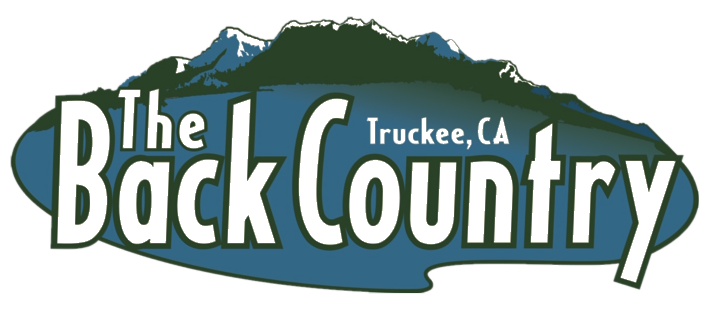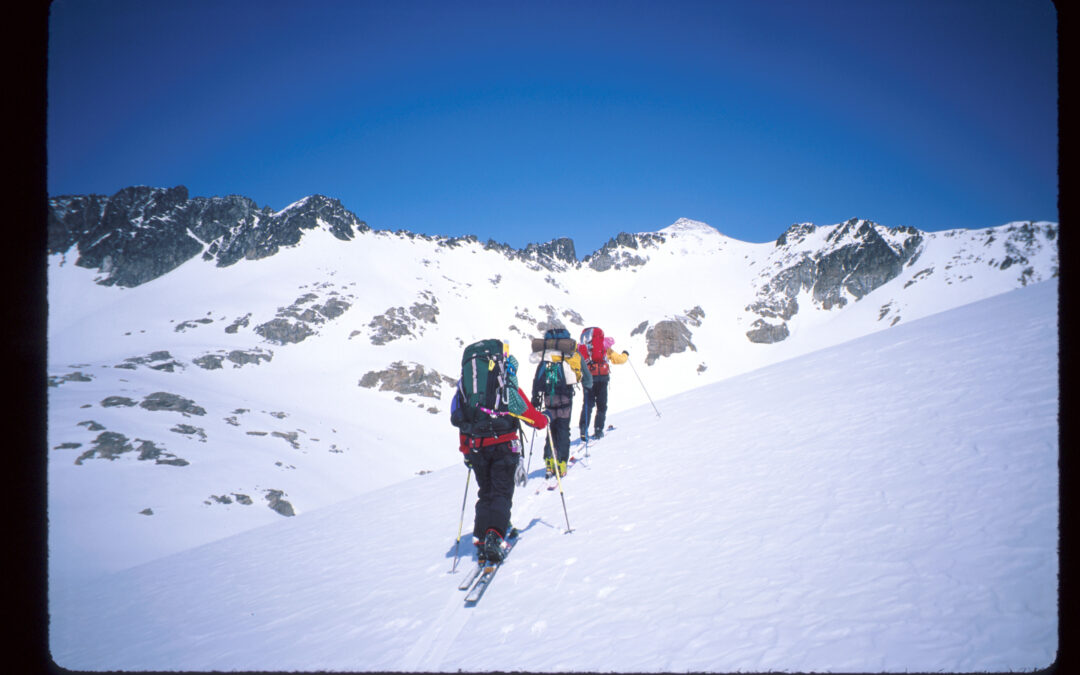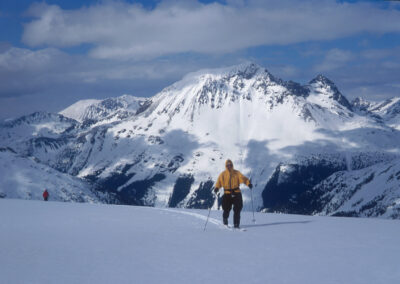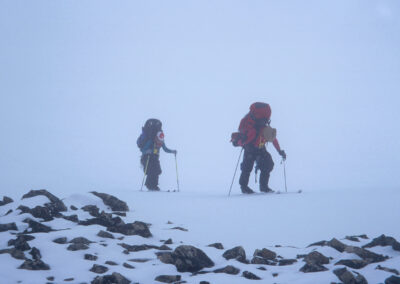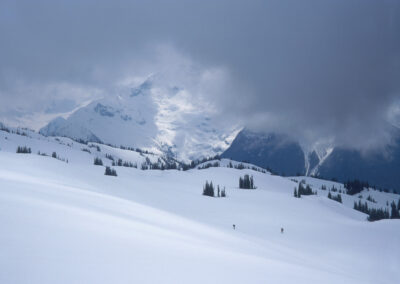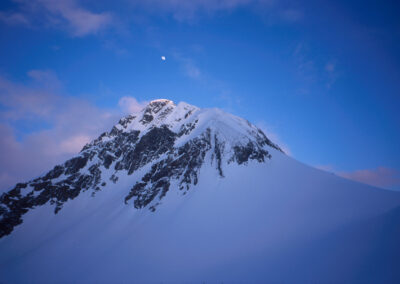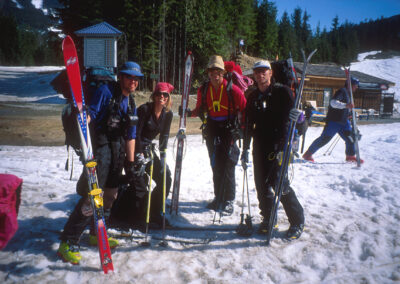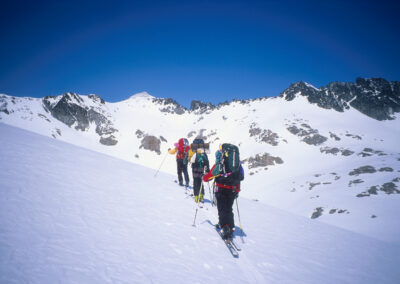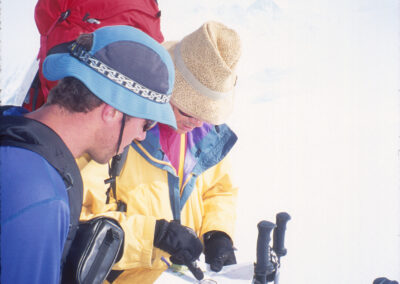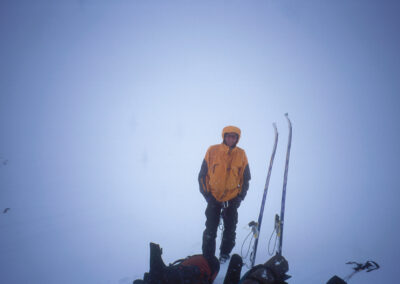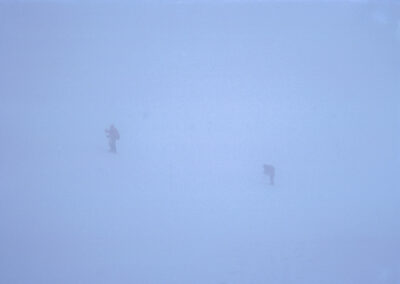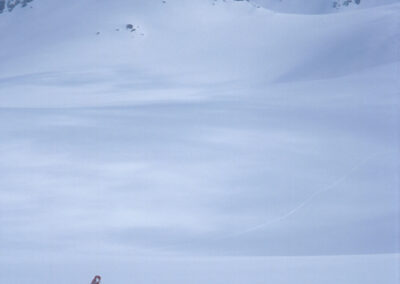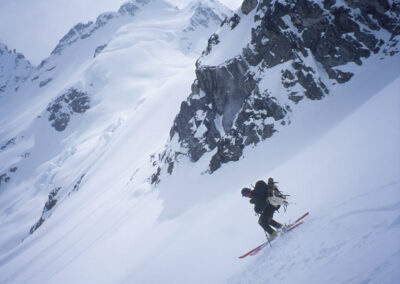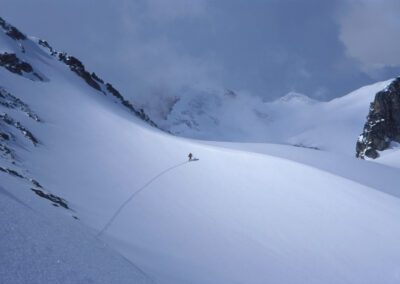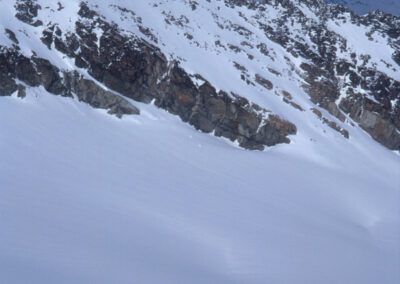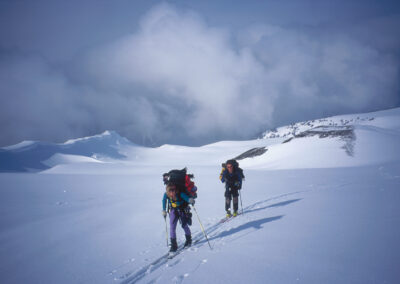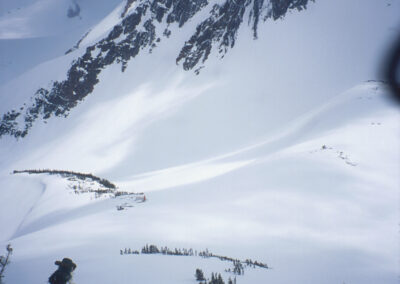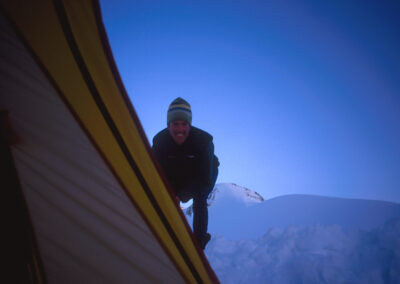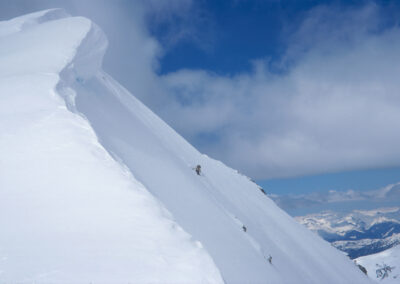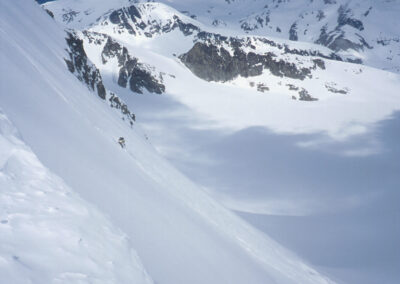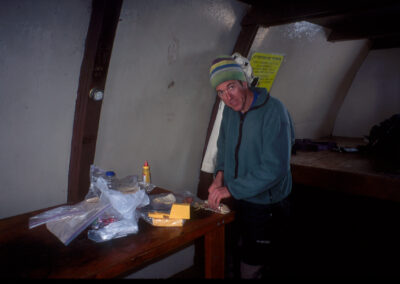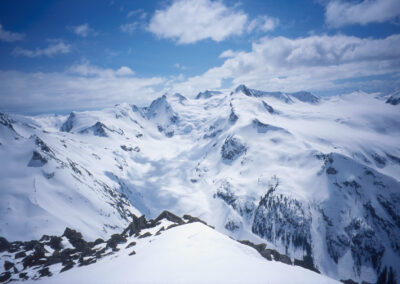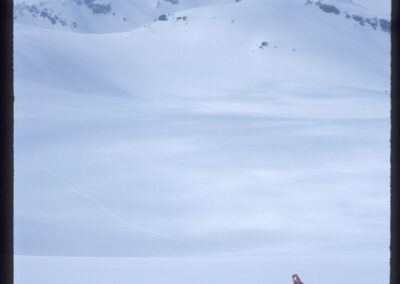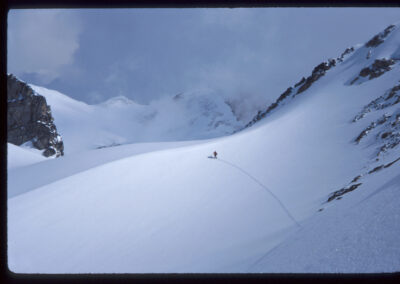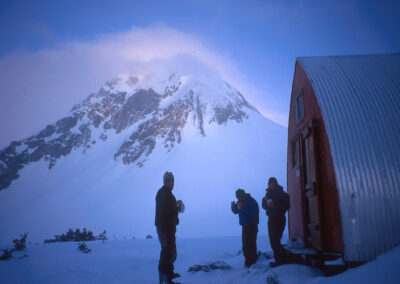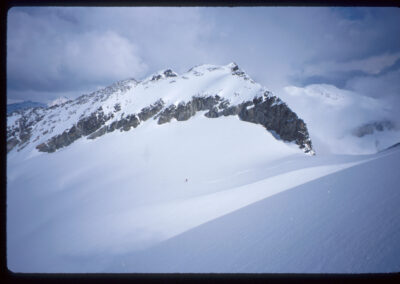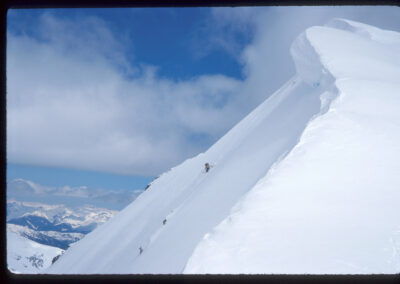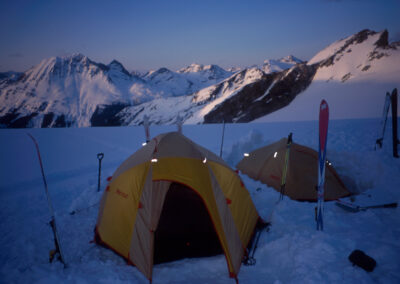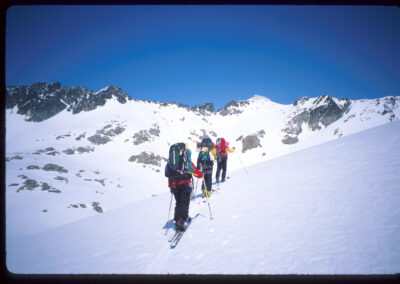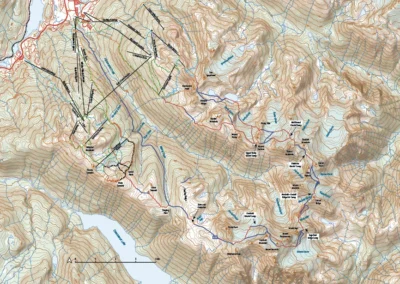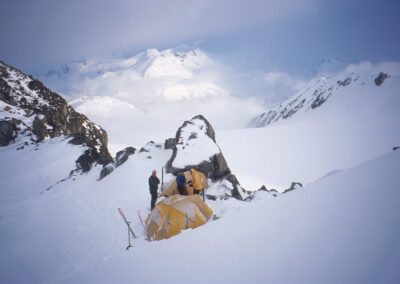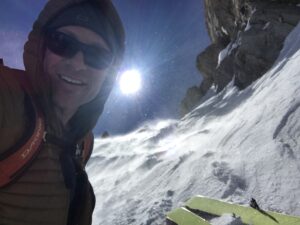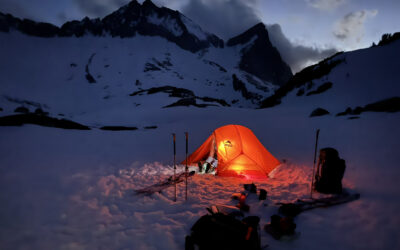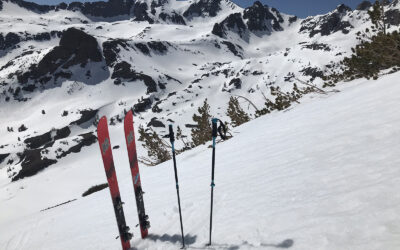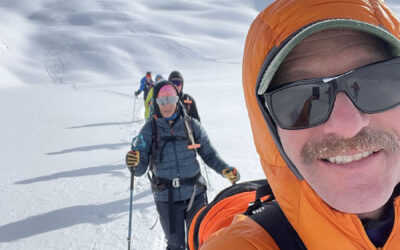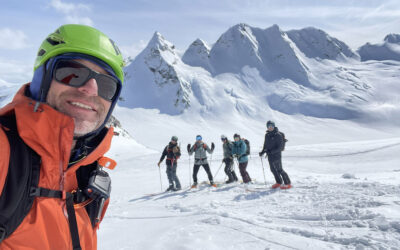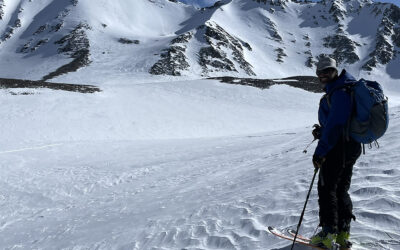Location: Tioga Pass – Saddlebag Lake
Elevation Change: 5,600′
Length of Tour: 35K or 22 miles not included ski area lifts and groomer return
In the late 90’s I skied the Spearhead Traverse route with Norma and Dave Bowers, and Steve Reynaud. This classic multi-day ski tour is done all the time these days. At that time, I assume it saw regular traffic, but it was not crowded or well known. No one in the village at any ski shop could give me any advice, map or guidebook when I arrived the afternoon before we launched. I bought a small poster of an aerial photograph of the entire Whistler Blackcomb ski terrain and surrounding glaciers, and folded that up to put in my pocket. There were no names on it, and certainly no ski tour line drawn on it like we find today. Dave looked at the map and declared “this is going to be easy”. Really Dave? Easy?
Norma and Dave new Whistler ski area a little, where you start this tour by riding the lifts to the top. We went up the gondola in a blizzard, expecting to just come back down and go home. Dave had more experience than Steve and I with map reading and multi-day touring and gave us some confidence when we arrived up top with no wind or snow. It was still a white out though. We didn’t have a GPS. I’m pretty sure we didn’t have a compass or any guidebook beta. But Dave understood the concept, which became apparent to the rest of us when the skies cleared for us by the end of the first day. I didn’t even know how Whistler and Blackcomb aligned yet. It’s an amazing ski area. Two huge ski areas with 5,000’ of elevation. You go to the top of Whistler, follow an ridge called Musical Bumps which leads to the Russet Hut. Then the more serious terrain begins, wrapping around the Fitzsimmons Drainage over glaciers and around beautiful peaks. Then you re-enter adjacent Blackcomb ski area and ski down those groomers. Today Randonnée racers nail it in a day. We took our time and skied a few of the peaks.
Our packs were so much heavier than what we use today, and our telemark skis were 70mm at the waist and didn’t have the free pivot feature. Steve had Silvretta tour bindings which we learned aren’t made for skiing ,but he survived. Check out his ski and binding setup in the pictures. I took slide film pictures and will add some to this post if I can get them digitized.
The Traverse is a 22-mile journey from top of whistler to top of Blackcomb ski areas, crossing 13 glaciers. With good visibility we could see the route, although we didn’t have any tracks to follow. It was crazy cold. Steve and I would get our boots on, swing our feet a little, and just bolt out of the tent each morning without the pack and climb 1000’ to get warm. Each day would start the day after that. We all learned a few things on that tour. Norma was a guide on Denali. She learned what freeze-dry food was, when she saw Steve and I pull out super lightweight food. She brought a pot that looked like it came from your kitchen, and a huge block of cheese, and who knows what else. At 5’2” she probably had the biggest pack of all of us and crushed it. Dave learned what a 3-season tent can’t do, which is keep blowing snow out. The mesh is too low on the tent. I got out of our bomber 4-season tent one morning and peered in to see how Dave and Norma were doing. I peeled back their vestibule, which didn’t come close enough to the ground, and saw an inch of snow completely blanketing them inside the tent. Steve and I learned from Norma that you need to boil water in your Nalgene bottle before going to bed and put it in the bottom of your sleeping bag. I still find people freezing these days on multi day trips who don’t know this. It should say on the bottles what they do the best…keep your feet warm at night!
At that time there was only one hut on the route, which we spent four days skiing. I know there is a plan to add more huts. The russet hut we stayed in was open and colder than being in a tent. Just a steel shelter, which I’m not even sure we stayed inside that night. After dinner Steve and I kicked stepped up a couloir on Mt. Fissle. We got socked in clouds that rolled in and hurried back down, only to find the view of the Russet hut was gone. Norma knew what we needed and started clanking the pot to a spoon. That totally worked for us to find our way back. The snowpack was deep as we got into glacier crossings. We were following Dave, who seemed to know we didn’t need to be roped up by the conditions we had. Or maybe we should have? There were no signs of sagging crevasses along our route Dave picked out, but I’m sure we were crossing them in many places. Now I know that when the snowpack is 15’ or more on top of dry glacier, and you don’t see any sag in the slope, you are pretty safe to go ski off rope. I don’t remember probing to measure, but it was late spring and a big snow year. We skied Mt.Decker, Mt. Tremor, some of Mt. Fissle, and some nice wide-open glaciers.
